
“To establish and maintain a public aquarium in the Rockford, Illinois area for the betterment of our community with a focus toward educating children and adults to the wonders and sustainment of our watersheds, rivers, oceans and the life within.”
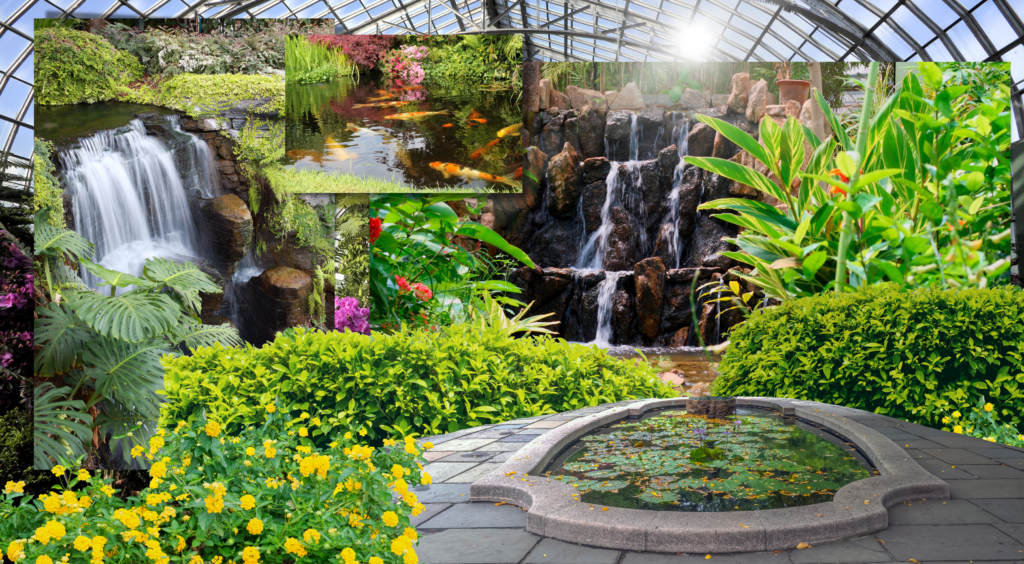
“To offer a life-altering aquarium experience where visitors will explore beautiful and vibrant ocean life and learn the importance of conserving our water, the ocean and its inhabitants”.
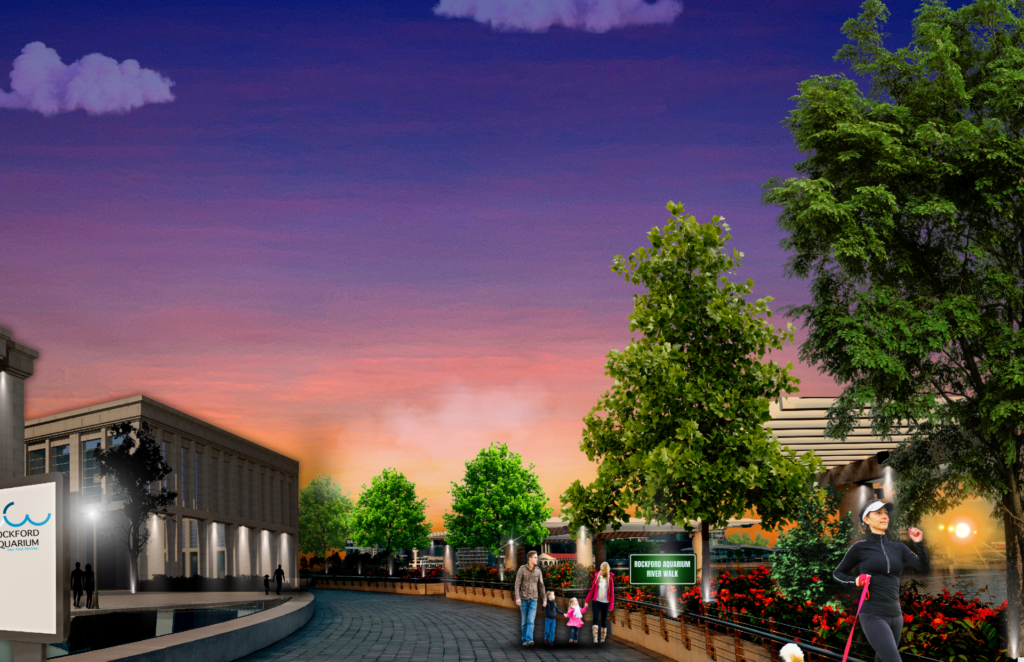
“To be a leader in the aquarium industry, providing innovative exhibits and educational programs that engage and enlighten visitors of all ages and backgrounds. Through our commitment to conservation and sustainability, we hope to create a better future for our planet and all its living creatures.”
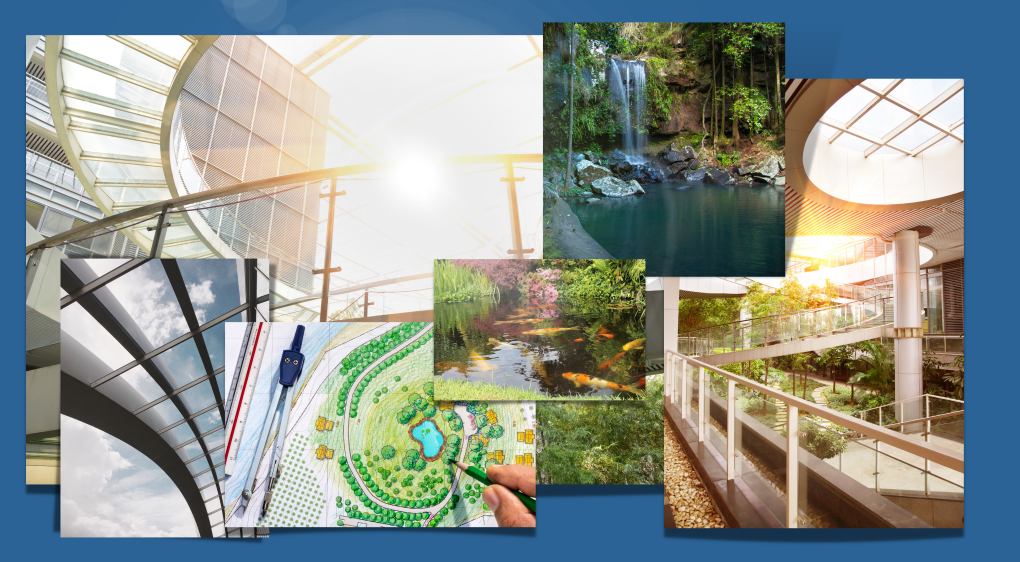
By 2025, we seek to harness these development strategies toward Our vision of a robust, modern aquarium, deeply rooted in values and prospering with measurable impact in showcasing ocean and freshwater environments through an integrated approach to research, education, entertainment, and conservation.
The attendance analysis and aquarium industry data provided in the ConsultEcon development feasibility study informed the assumed “right size” for the Rockford Aquarium at approximately 50,000 SF with 250,000 gallons of water. In addition, the Aquarium’s outside ground areas will be used for additional exhibits and visitor experiences, visitor access, an open space café, and event seating.
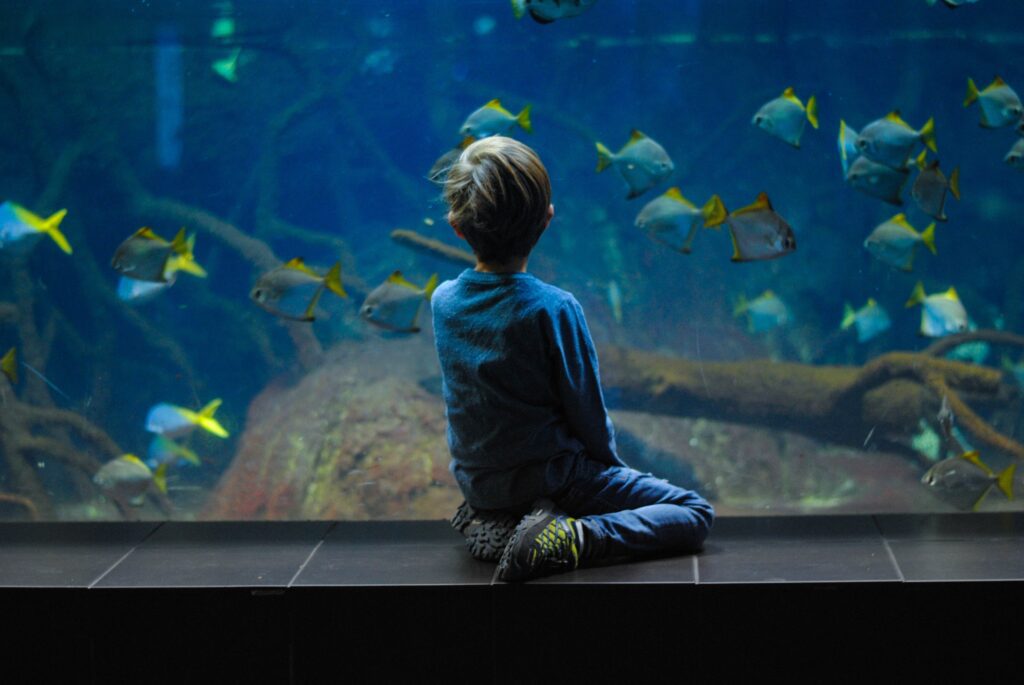
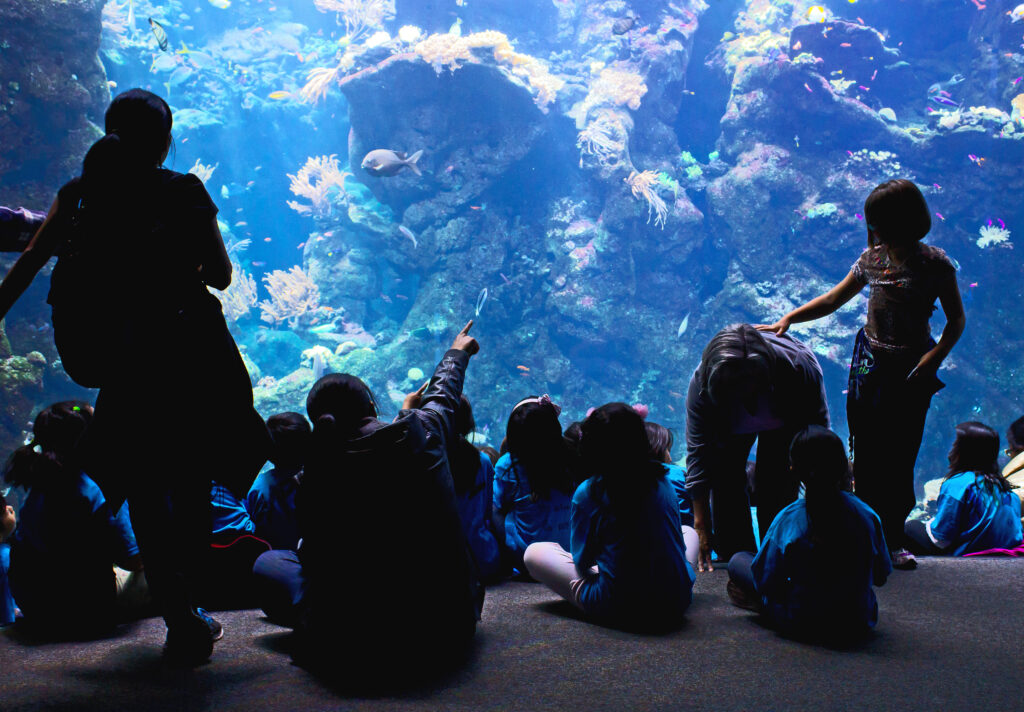
Key features of this prototypical building program will include permanent and changing exhibits, with interactive animal displays and visual experiences that are highly repeatable and impactful, outdoor and public open space that contributes to more extended stays by guests, and deeper visitor engagement, education program, and community event spaces, visitor immersion experiences, and other support spaces.
Because a specific site has not been secured at the Barber Colman Campus, the analysis has assumed a “generic waterfront site” on the riverside area that would meet the positioning requirements of a significant aquarium and will serve to advance the legacy goal of revitalizing the South Main Corridor.
The Aquarium has the potential to operate successfully over time based on the current facility plans, proposed facility size, visitor experiences and programs, and the preliminary operating plan. The Aquarium’s success will depend on intensive marketing, educational learning programs and operations, a trained staff, and active corps of volunteers and members. Diversified and creative sources of revenue and sound fiscal management will assist the Rockford Aquarium in sustaining its operations and achieving its potential for economic impacts and community benefits.
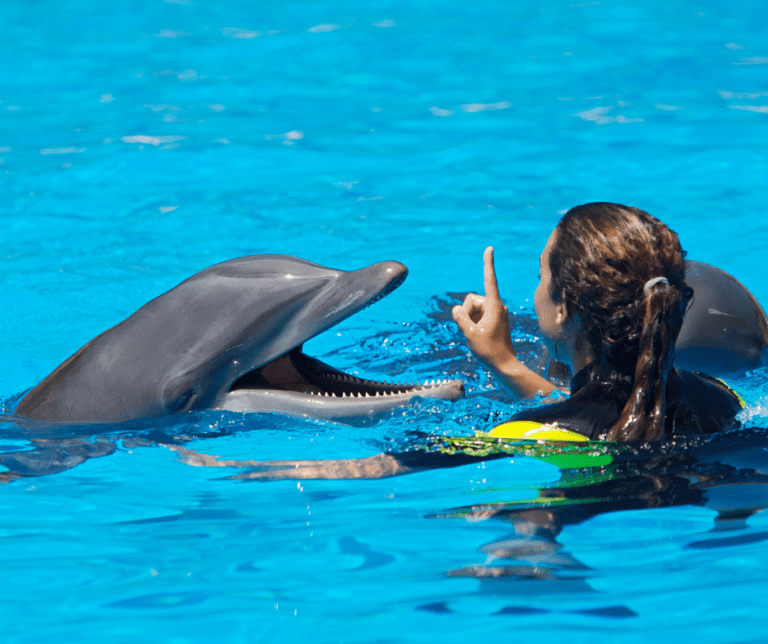

The Aquarium’s strategic plan has been a powerful, flexible tool that the Board will revisit and revise each year. The Planning will be a continuous process, not a one-time event. It has been a method by the Board to declare priorities and explain the need for additional resources or for doing work differently with better results.

“Overall, aquariums continue to be proposed, planned, and constructed in many places throughout the world and in the U.S. The U.S. market has an especially strong array of not-for profit public aquariums. Currently there are over 100 aquariums in
the U.S. with many zoos also offering full aquarium experiences.
Most major U.S. cities and tourism destinations now have public aquariums.
The continued and long-term public market acceptance and repeat visitation patterns to aquariums, along with technical advances in aquarium tank and life support systems, have fostered the proliferation of smaller aquariums in smaller cities and smaller tourist destinations and in commercial settings such as shopping centers.
Most aquariums have a record of strong attendance and operating results.”
*ConsultEcon, Inc. – Management & Economic Insight October 1, 2021
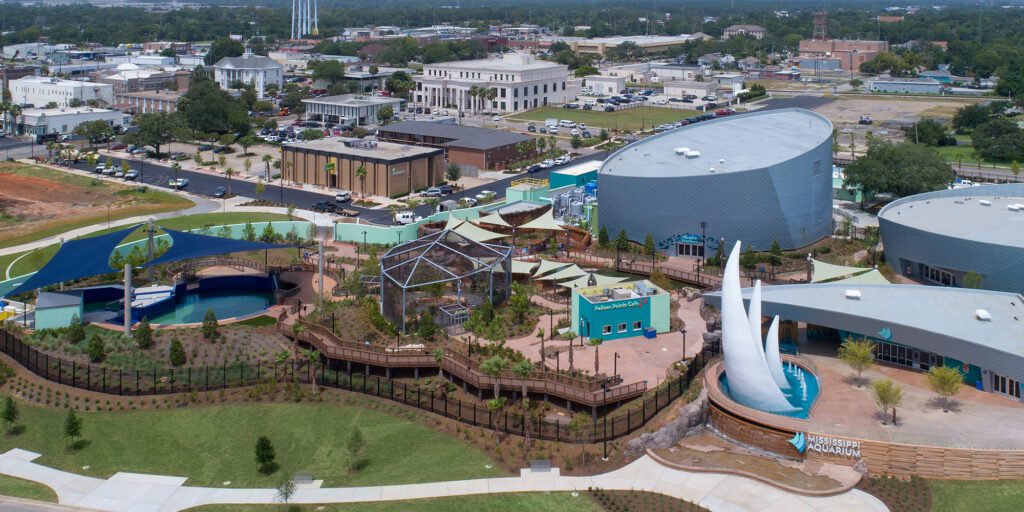
The Mississippi Aquarium in Gulfport opened August 29, 2020. It has 80,000 square feet (SF) on a 5.8-acre site with over 1 million gallons of water in its displays. It has 12 major exhibits featuring over 200 species of fish and 50 species of native plants.
The development budget was $93 million of which $14.5 million was land purchase by the City of Gulfport. Attendance has been hampered by the COVID pandemic, but when conditions improved earlier this year, attendance increased.
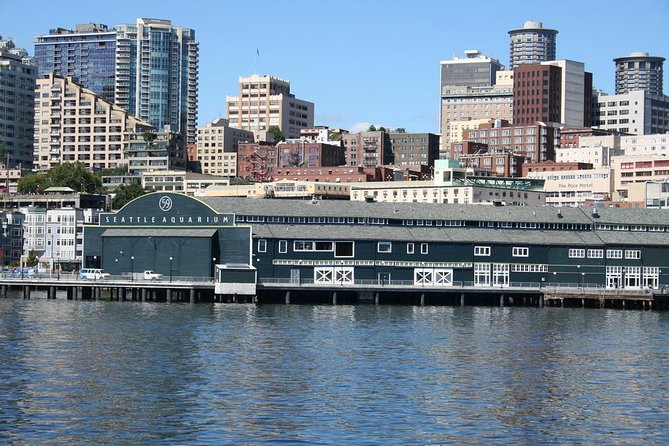
The Seattle Aquarium is planning a 50,000 SF Ocean Pavilion expansion adjacent to its existing 116,000 SF facility. A 325,000-gallon tank with 6-foot-long sharks and 6-foot-wide sting rays native to the South Pacific will be the main draw of the new pavilion. The total cost is estimated at $113 million. The planned opening of the expansion is in 2023.
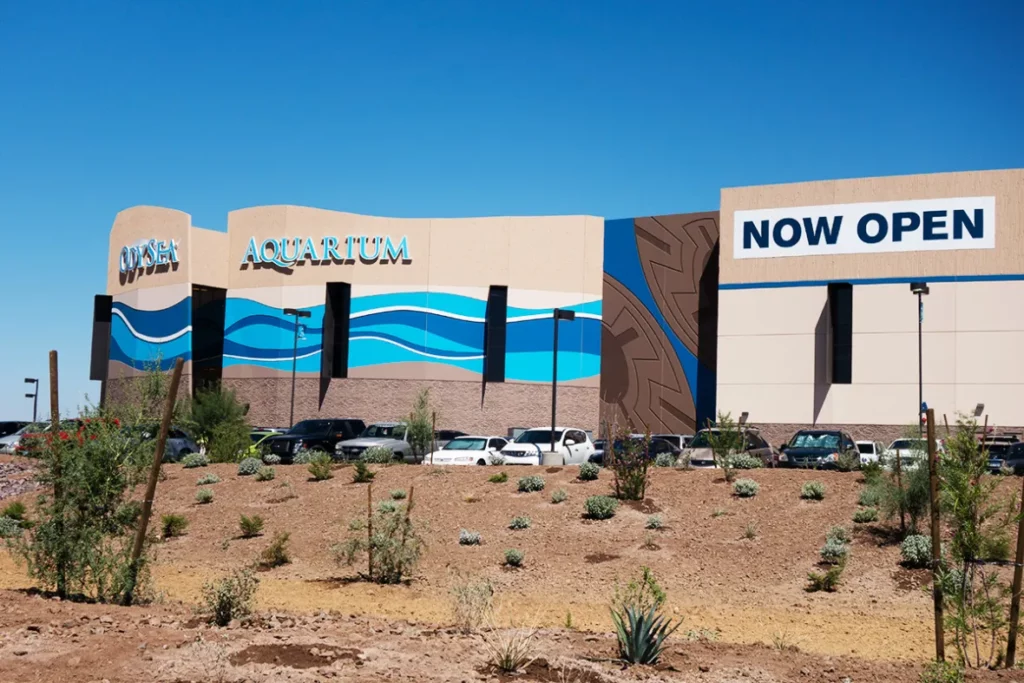
The Odysea Aquarium Scottsdale opened September 2016. The building spans over 200,000 SF and its tanks hold more than 2 million gallons of water. The building construction cost was reported at $52.5 million and fit-out and soft costs reportedly increased total development cost to over $100 million. There are over 6,000 animals and 370 different species in over 65 exhibits. Odysea Aquarium is part of a $175 million entertainment complex called Arizona Boardwalk that is partially completed on 35 acres near Scottsdale leased from the Salt River Pima-Maricopa Indian Community.
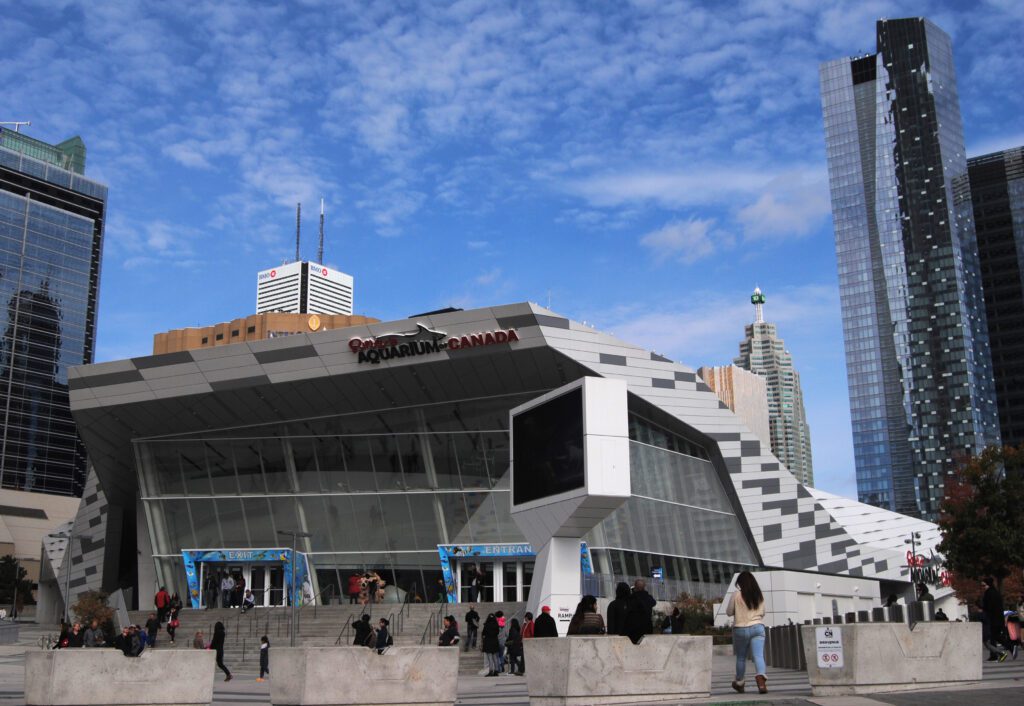
Ripley’s Canada Aquarium is a 135,000 SF aquarium with more than 1.5 million gallons of water that opened 2013. This is a for-profit aquarium is located at the base of the CN Tower and close to major Toronto attractions. Its 780,000-gallon shark tank is the centerpiece of the $130 million aquarium (including $11 million incentive contribution from the Province of Ontario). It averaged 2 million annual visitors in its first five years of operations.
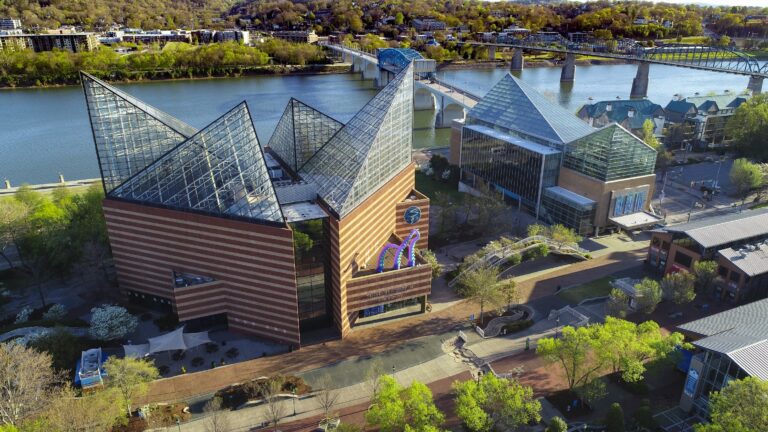
To view THE 30-YEAR ECONOMIC IMPACT PDF
Follow the link below
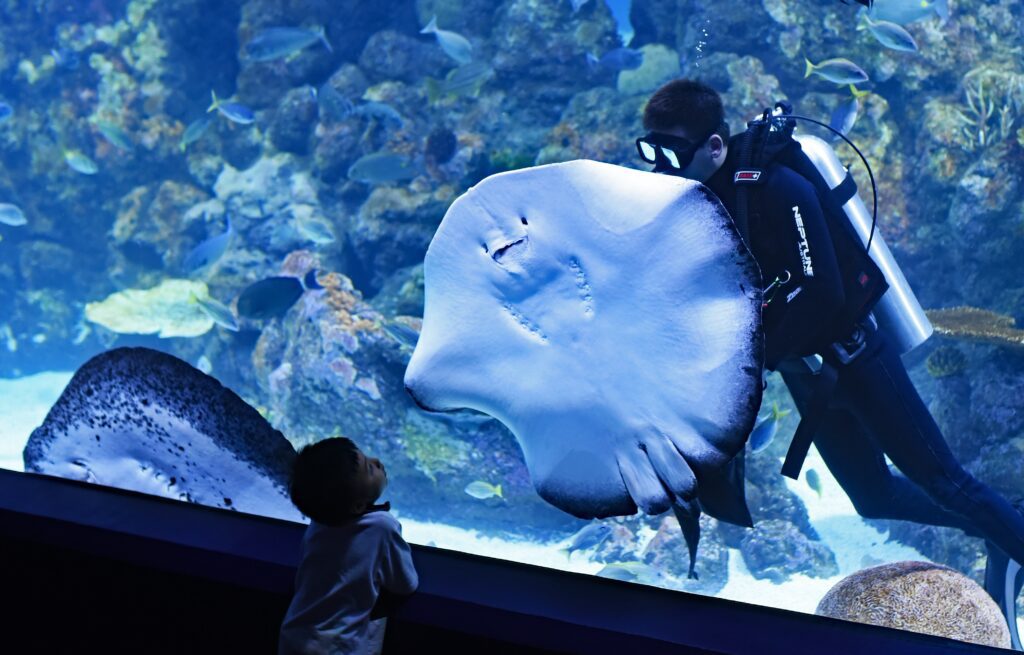
Aquariums are a well-known attraction type, generally with high and repeat visitation levels. Aquarium audiences have preconceived expectations that their experience will be “fresh” and that there are new reasons to visit will be offered.
While most aquariums focus on saltwater habitats, some have successfully interpreted their unique, local marine or freshwater stories, which helps them be especially interesting for local tourists and residents. Other aquariums offer a mix of “exotic” environments and species and compare them to the local water environment and species.
Aquariums’ technology and exhibit techniques have improved substantially in recent decades. Advanced life support systems, improved husbandry techniques, more extensive, unobstructed acrylic panels and tunnels for better viewing, and other improvements have become standard in modern aquariums.
Today, as technology and digital exhibitions have advanced and improved, the visitor experience and expectations have also risen.
Today, the beauty of marine life and environments is combined in aquariums with strong educational content and commitment to conservation in the messages to visitors and in direct conservation and research programs that address a wide variety of topics, such as species survival and habitat restoration, both on-site and in the field.
The Aquarium will achieve success in various market contexts given the right size, quality program content, competitive pricing, strategic marketing programs, conservation and research initiatives, and a sustainable operating model.
ConsultEcon provided the ‘Landmark Feasibility Study’ for the economic, feasibility, marketing, and planning services for
the Project, to the County, The City of Rockford, and The Rockford Aquarium.
*CONSULTECON, INC.- For Further Information, Please Link To : https://www.consultecon.com/